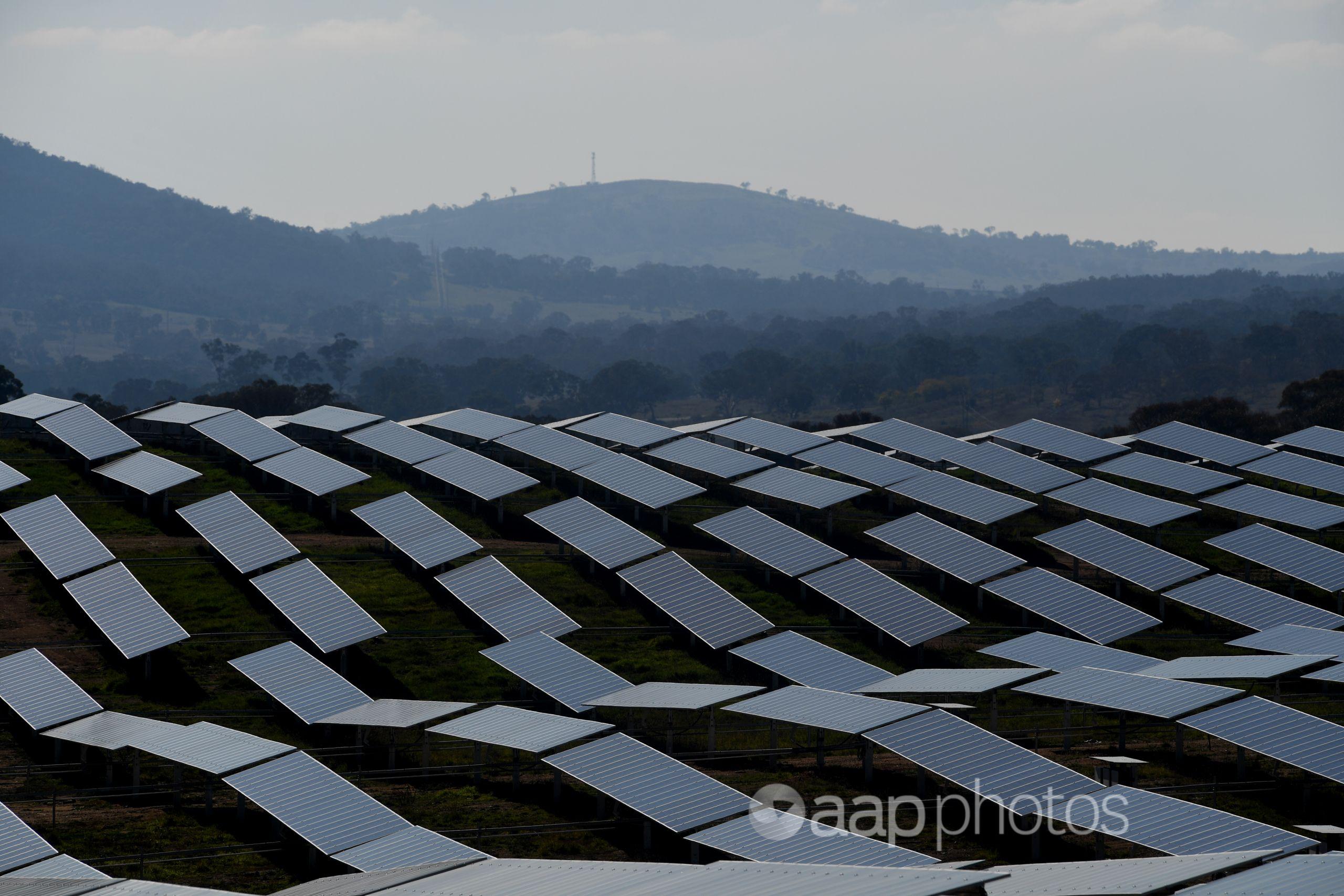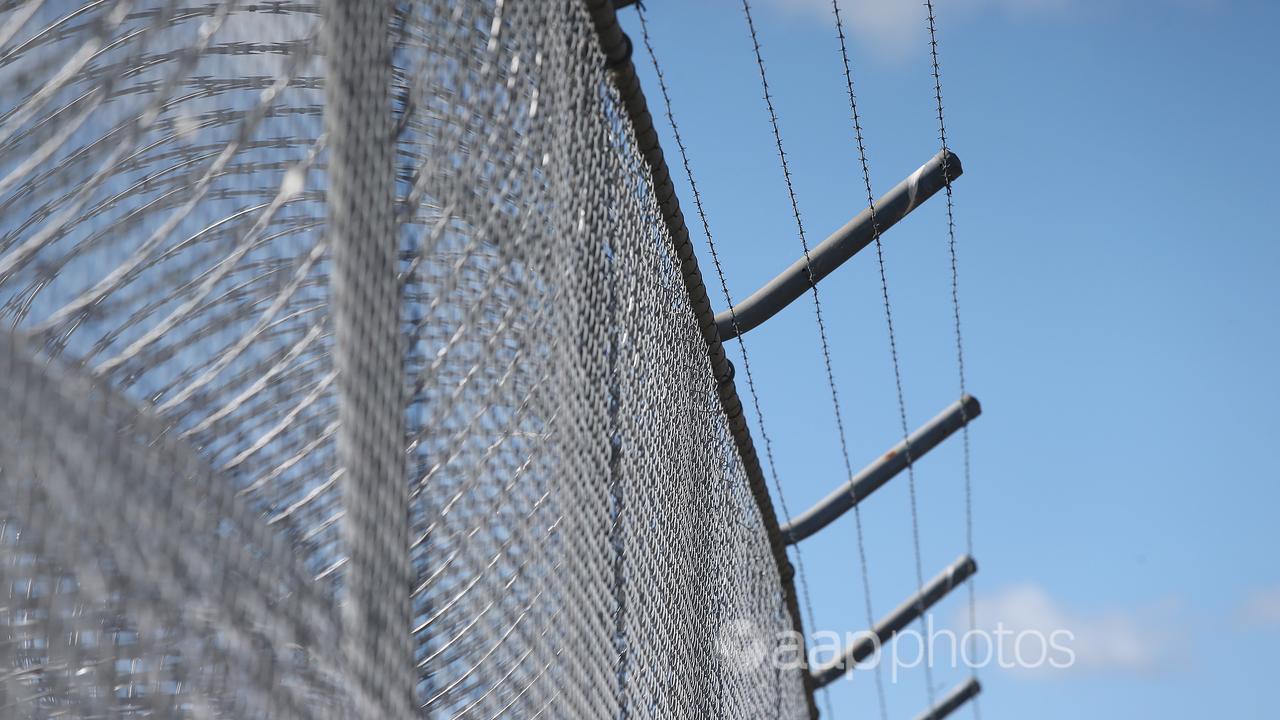AAP FactCheck Investigation: Is Australia deploying renewable energy 10 times faster than the rest of the world?
The Statement
“We are a world leader in renewable energy investment, deploying wind and solar at 10 times the global per capita average.”
Angus Taylor, Liberal MP and Energy Minister, September 22, 2020.
The Analysis
Energy Minister Angus Taylor has heralded Australia’s deployment of renewable energy as a success story in the country’s efforts to reduce greenhouse gas emissions.
In a National Press Club speech calling for a “technology-led approach” to reducing the nation’s carbon footprint, the Liberal MP said Australia had “done remarkably well in emissions reductions in recent years”.
“We are a world leader in renewable energy investment, deploying wind and solar at 10 times the global per capita average,” he said in the September 2020 address.
Similar claims have been repeated in multiple media statements from the minister, including in November 2020, December 2020 and February 2021, which have also favourably compared Australia’s rollout of renewable energy sources to those in Europe, the US and China.
AAP FactCheck examined Mr Taylor’s statement that Australia is deploying wind and solar energy 10 times faster than the rest of the world on a per capita basis.
When contacted for the source of the claim, the minister’s office referred to a Australian National University review of Australia’s renewable energy take-up from early September 2020.
The review included the statement: “Australia is leading the world in per capita deployment of solar and wind,” it said
“In 2019, Australia deployed new renewable energy 10 times faster per capita than the global average and four times faster per capita than in Europe, China, Japan or the USA.”
The tenfold figure was based on total renewable energy capacity, including sources such as hydro power, while Mr Taylor’s Press Club statement singled out wind and solar capacity.
Andrew Blakers, a professor of engineering at ANU and one of the review’s authors, told AAP FactCheck the figures were based on data from the International Renewable Energy Agency (IRENA).
Prof Blakers said the researchers used IRENA data on the total renewable energy deployed per country and divided this by Worldometer population data to calculate new renewable energy per capita.
Australia added 6096 megawatts (MW) of renewable energy between 2018 and 2019, or around 242 watts (W) per person based on the IRENA figures and the country’s estimated population in 2019.
That compared to an increase of 175,792MW in renewable energy capacity worldwide, or less than 23W per person – more than 10 times lower than Australia’s per capita figure.
When just solar and wind energy capacity was used, Australia’s per capita renewable energy deployment was nearly 12 times the rate worldwide.
The ANU review also showed Australia’s per-person deployment rate for solar and wind energy outpaced that in the US, Germany, Japan and Europe-wide in both 2018 and 2019 (figure 2).
However, John Quiggin, a professor of economics at the University of Queensland who has written extensively about climate policy, said comparing Australia’s renewable energy deployment to the rest of the world was a “cherry-picked statistic”.
“Global per-capita average is not very relevant since people in poor countries have less of everything, including all kinds of energy,” he told AAP FactCheck via email.
According to figures from the International Energy Agency (IEA), electricity consumption per capita worldwide was 3.3 megawatt-hours (MWh) in 2018, while in Australia it was 9.9 MWh – three times higher.
Murdoch University academic chair of environmental engineering Martin Anda and associate professor of engineering and energy discipline Tania Urmee told AAP FactCheck in a joint email that other developed countries, like Germany, were also “much further along in the move to renewable energy”.
“Australia started from a very low base when it comes to renewable energy, so it is easy to obtain a high growth rate,” they said.
An analysis of IEA figures for 2019 shows less than 19 per cent of Australia’s electricity generation came from hydro, wind and solar sources, against more than 32 per cent in Germany, which also produces a large share of its power from nuclear plants.
Associate professor Mark Diesendorf, an expert in renewable energy technology from UNSW Sydney, called Mr Taylor’s claim “misleading in the context”.
Dr Diesendorf said while Australia may be deploying new renewable energy at a high rate, it still lagged many other countries in overall renewable energy generation.
“Denmark is generating about two-thirds of its electricity from renewables – non-hydro renewables – and it has a population a fifth of Australia, so their per capita annual generation is many times that of Australia, and similarly for Scotland,” he said.
Australia ranked among the top 10 countries for total installed capacity from solar and wind in 2019, according to an IRENA comparison, however that only came after large increases in capacity in recent years.
Between 2017 and 2019, Australia’s capacity from solar and wind generation jumped more than 90 per cent, compared to a 34 per cent increase worldwide, an analysis of the IRENA figures shows.
But between 2013 and 2017, global capacity rose more than 105 per cent, compared to a 56 per cent increase in Australia.
Nevertheless, Prof Blakers said it was wrong to argue that Australia was coming off a low base for renewable energy capacity as it now had the highest per capita amount of solar power and would soon be “among the global leaders” for installed wind capacity.
“Government quarterly emissions data shows that this solar and wind is reducing Australian emissions, and has the potential to dramatically reduce emissions at low cost in the future if we installed solar and wind even faster than at present,” he said.
The Verdict
AAP FactCheck found Mr Taylor’s claim that Australia was deploying wind and solar energy 10 times faster than the rest of the world on a per-capita basis to be somewhat true.
While the statement is correct for the period from 2018 to 2019, it came after several years in which Australia lagged the rest of the world. Multiple experts also said it was incorrect to compare Australia’s recent rise in renewable energy to a group that included developing nations, where people typically used less electricity, or to countries that had more mature renewable energy sectors.
Somewhat True – A part or parts of the claim are accurate but there is also a significant problem or inaccuracy.
* Editor’s note: AAP FactCheck has expanded its ability to fact-check environmental issues with the support of the Australian Conservation Foundation. AAP FactCheck retains full editorial independence in this project and continues to apply the rigorous standards required for accredited members of the International Fact-Checking Network.
All information, text and images included on the AAP Websites is for personal use only and may not be re-written, copied, re-sold or re-distributed, framed, linked, shared onto social media or otherwise used whether for compensation of any kind or not, unless you have the prior written permission of AAP. For more information, please refer to our standard terms and conditions.


















